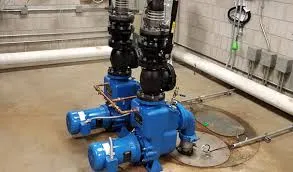English
- Afrikaans
- Albanian
- Amharic
- Arabic
- Armenian
- Azerbaijani
- Basque
- Belarusian
- Bengali
- Bosnian
- Bulgarian
- Catalan
- Cebuano
- Corsican
- Croatian
- Czech
- Danish
- Dutch
- English
- Esperanto
- Estonian
- Finnish
- French
- Frisian
- Galician
- Georgian
- German
- Greek
- Gujarati
- Haitian Creole
- hausa
- hawaiian
- Hebrew
- Hindi
- Miao
- Hungarian
- Icelandic
- igbo
- Indonesian
- irish
- Italian
- Japanese
- Javanese
- Kannada
- kazakh
- Khmer
- Rwandese
- Korean
- Kurdish
- Kyrgyz
- Lao
- Latin
- Latvian
- Lithuanian
- Luxembourgish
- Macedonian
- Malgashi
- Malay
- Malayalam
- Maltese
- Maori
- Marathi
- Mongolian
- Myanmar
- Nepali
- Norwegian
- Norwegian
- Occitan
- Pashto
- Persian
- Polish
- Portuguese
- Punjabi
- Romanian
- Russian
- Samoan
- Scottish Gaelic
- Serbian
- Sesotho
- Shona
- Sindhi
- Sinhala
- Slovak
- Slovenian
- Somali
- Spanish
- Sundanese
- Swahili
- Swedish
- Tagalog
- Tajik
- Tamil
- Tatar
- Telugu
- Thai
- Turkish
- Turkmen
- Ukrainian
- Urdu
- Uighur
- Uzbek
- Vietnamese
- Welsh
- Bantu
- Yiddish
- Yoruba
- Zulu
Telephone: +86 13120555503
Email: frank@cypump.com
Dec . 05, 2024 14:34 Back to list
submersible sewage ejector pump
Understanding Submersible Sewage Ejector Pumps
Submersible sewage ejector pumps play a critical role in the efficient management of wastewater in residential and commercial settings. These specialized pumps are designed to handle the removal of sewage and wastewater from below ground level, making them an essential component in any system that requires efficient waste removal. This article explores the functionality, advantages, and applications of submersible sewage ejector pumps.
What is a Submersible Sewage Ejector Pump?
A submersible sewage ejector pump is a type of pump that operates while fully submerged in the sewage it is designed to pump. Unlike conventional pumps that are situated above the wastewater level, submersible pumps are located below the surface, connected to a collection pit or sump. They work by using a motor that drives an impeller, creating pressure that forces sewage upwards and out through the discharge pipe, effectively moving waste to a treatment facility or septic system.
Key Features and Components
Submersible sewage ejector pumps are characterized by several key features
1. Hermetically Sealed Motor The motor is sealed to prevent water ingress, ensuring protection against corrosion and damage from hazardous materials within the sewage. 2. Float Switch Most submersible pumps are equipped with float switches that automatically turn the pump on and off based on the wastewater level in the sump pit, enhancing operational efficiency.
3. Durable Construction These pumps are constructed from robust materials, such as cast iron or stainless steel, to withstand harsh conditions and prevent damage from abrasive solids typically found in sewage.
4. High Flow Rates Submersible ejector pumps are designed to handle high volumes of sewage, ensuring that they can manage peak flow rates during periods of heavy usage.
Advantages of Submersible Sewage Ejector Pumps
Submersible sewage ejector pumps offer numerous benefits
submersible sewage ejector pump

- Space Efficiency Being installed below ground reduces the required onsite space, which is particularly advantageous in compact urban settings.
- Noise Reduction As these pumps are submerged, they operate more quietly compared to above-ground pumps, making them ideal for residential areas.
- Lower Installation Costs Submersible pumps eliminate the need for expensive pit constructions and complicated plumbing configurations, resulting in cost savings during installation.
- Reliable Performance Designed to handle solids and fibrous materials without clogging, these pumps provide reliable service for both residential and commercial use.
Applications
Submersible sewage ejector pumps find usage in a variety of applications
- Residential Settings They are commonly used in homes with basements or properties situated below the municipal sewer line. In such cases, they help in transferring wastewater from bathrooms, laundry areas, and kitchens.
- Commercial Applications Restaurants, hotels, and other commercial facilities that generate high volumes of wastewater benefit significantly from submersible pumps to manage their sewage systems effectively.
- Septic Systems For rural areas where municipal sewage systems are not available, these pumps are essential for managing effluent from septic tanks.
Conclusion
Submersible sewage ejector pumps are vital components in modern wastewater management, providing efficient and effective solutions for both residential and commercial needs. Their design, which allows for quiet operation and space efficiency, combined with their ability to handle various types of sewage, makes them an excellent choice for effective waste removal. With ongoing advancements in technology, submersible pumps continue to evolve, ensuring that they meet the growing demands of municipalities and homeowners alike. Whether for new installations or replacements, investing in a quality submersible sewage ejector pump is essential for maintaining a reliable and efficient wastewater management system.
-
ISG Series Vertical Pipeline Pump - Chi Yuan Pumps Co., LTD.
NewsJul.30,2025
-
ISG Series Vertical Pipeline Pump - Chi Yuan Pumps Co., LTD.|energy-efficient fluid handling&industrial durability
NewsJul.30,2025
-
ISG Series Vertical Pipeline Pump - Chi Yuan Pumps | Advanced Engineering&Industrial Efficiency
NewsJul.30,2025
-
ISG Series Pipeline Pump - Chi Yuan Pumps | High Efficiency, Energy Saving
NewsJul.30,2025
-
ISG Series Vertical Pipeline Pump-Chi Yuan Pumps|High Efficiency&Reliable Performance
NewsJul.29,2025
-
ISG Series Vertical Pipeline Pump|High Efficiency&Low Noise
NewsJul.29,2025










